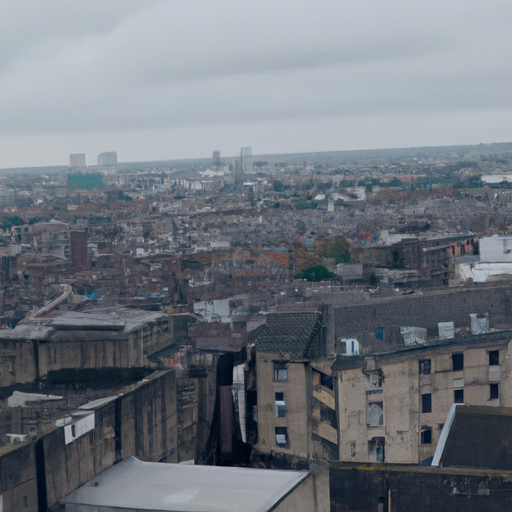
Factors impacting Global RevPAR Growth Slowdown
Global RevPAR Growth Slows, Ireland Achieves 90% Occupancy, and China’s Recovery Weakens
The global hotel industry has been facing some challenges recently, with RevPAR growth slowing down in many regions. This slowdown can be attributed to several factors that are impacting the industry as a whole. One of the main reasons for this decline is the weakening of China’s economic recovery.
China, which has been a major driver of global tourism in recent years, has seen its economy slow down in the past few months. This has resulted in a decrease in both domestic and international travel, leading to a decline in hotel occupancy rates and RevPAR growth. As China’s recovery weakens, it is expected that the global hotel industry will continue to face challenges in the coming months.
Another factor impacting global RevPAR growth is the increasing competition from alternative accommodation providers such as Airbnb. These platforms have gained popularity among travelers due to their affordability and unique experiences. As a result, traditional hotels are facing increased pressure to lower their prices and offer more personalized services in order to compete with these alternative options.
Furthermore, the ongoing trade tensions between the United States and China have also had a negative impact on the global hotel industry. These tensions have led to a decrease in business travel and a decline in international tourism, particularly between the two countries. As a result, hotels in both regions have experienced a slowdown in RevPAR growth.
Despite these challenges, there are still some regions that have managed to achieve impressive occupancy rates. Ireland, for example, has achieved a remarkable 90% occupancy rate in recent months. This can be attributed to several factors, including the country’s strong economy, its vibrant tourism industry, and its attractive cultural and historical attractions. Ireland has become a popular destination for both leisure and business travelers, leading to high occupancy rates and strong RevPAR growth.
In addition to Ireland, other regions such as the Middle East and Africa have also experienced positive growth in hotel occupancy rates. This can be attributed to the increasing number of international events and conferences being held in these regions, as well as the growing interest in cultural and adventure tourism. These factors have contributed to the overall growth of the hotel industry in these regions, despite the global slowdown.
In conclusion, the global hotel industry is currently facing a slowdown in RevPAR growth due to several factors. The weakening of China’s economic recovery, increasing competition from alternative accommodation providers, and ongoing trade tensions between the United States and China are all contributing to this decline. However, there are still some regions that have managed to achieve impressive occupancy rates, such as Ireland and the Middle East. These regions have benefited from strong economies, vibrant tourism industries, and attractive attractions. As the industry continues to navigate these challenges, it will be important for hotels to adapt and innovate in order to remain competitive in the global market.
Ireland’s Impressive 90% Occupancy Rate

Global RevPAR Growth Slows, Ireland Achieves 90% Occupancy, and China’s Recovery Weakens
In the ever-evolving world of hospitality, it is crucial to stay up to date with the latest trends and developments. One of the key indicators of a thriving hotel industry is the Revenue per Available Room (RevPAR), which measures the average income generated by each available room. Recent reports have shown that global RevPAR growth has slowed down, but there are still some shining stars in the industry, such as Ireland, which has achieved an impressive 90% occupancy rate. On the other hand, China’s recovery seems to be weakening, raising concerns about the future of its hotel industry.
Let’s start with the positive news from Ireland. With its stunning landscapes, rich history, and vibrant culture, it’s no wonder that Ireland has become a popular tourist destination. According to the latest data, the country’s hotel industry has reached a remarkable 90% occupancy rate. This means that nine out of ten hotel rooms in Ireland are occupied on any given night. This achievement is a testament to the country’s strong tourism sector and the efforts of its hospitality industry to provide exceptional experiences to visitors.
The high occupancy rate in Ireland can be attributed to several factors. Firstly, the country has seen a steady increase in international visitors over the past few years. Tourists from all over the world are drawn to Ireland’s iconic landmarks, such as the Cliffs of Moher and the Ring of Kerry, as well as its vibrant cities like Dublin and Galway. Additionally, the Irish government has implemented effective marketing campaigns to promote the country as a must-visit destination. These efforts have paid off, attracting a diverse range of travelers, from history enthusiasts to nature lovers.
Furthermore, Ireland’s hotel industry has been proactive in adapting to changing consumer preferences. The rise of online booking platforms and the sharing economy has transformed the way people book accommodation. Hotels in Ireland have embraced these changes by offering competitive rates, personalized services, and unique experiences that cannot be replicated by alternative lodging options. This customer-centric approach has undoubtedly contributed to the high occupancy rate in the country.
While Ireland celebrates its success, the situation in China tells a different story. After experiencing a strong recovery from the initial impact of the COVID-19 pandemic, China’s hotel industry is now facing challenges. Recent data shows that the country’s RevPAR growth has weakened, raising concerns about the sustainability of its recovery. This slowdown can be attributed to various factors, including a resurgence of COVID-19 cases in some regions, travel restrictions, and changing consumer behavior.
China’s hotel industry heavily relies on domestic tourism, and any disruptions to travel can have a significant impact on its performance. The recent outbreaks and subsequent lockdowns in certain areas have led to a decrease in travel demand, resulting in lower occupancy rates and RevPAR. Additionally, consumer behavior has shifted, with people becoming more cautious about travel and opting for staycations or shorter trips instead. These changes in demand patterns have put additional pressure on the already struggling hotel industry in China.
In conclusion, while global RevPAR growth has slowed down, Ireland’s hotel industry continues to shine with its impressive 90% occupancy rate. The country’s strong tourism sector, effective marketing campaigns, and customer-centric approach have contributed to its success. On the other hand, China’s recovery seems to be weakening, with a slowdown in RevPAR growth and challenges posed by COVID-19 outbreaks and changing consumer behavior. As the hospitality industry navigates these uncertain times, it is essential to stay informed and adapt to the evolving needs and preferences of travelers.
Challenges in China’s Weakening Recovery
Global RevPAR Growth Slows, Ireland Achieves 90% Occupancy, and China’s Recovery Weakens
The global hotel industry has been facing a series of challenges in recent times. One of the major concerns is the slowing growth of Revenue Per Available Room (RevPAR) worldwide. This decline in RevPAR growth has been observed across various regions, including Europe, Asia, and the Americas. While the industry had been experiencing steady growth in the past, the current situation calls for a closer look at the factors contributing to this slowdown.
In contrast to the global trend, Ireland has managed to achieve an impressive 90% occupancy rate. This remarkable achievement can be attributed to several factors. Firstly, Ireland’s tourism industry has been booming in recent years, with a significant increase in international visitors. The country’s rich cultural heritage, breathtaking landscapes, and warm hospitality have made it a popular destination for travelers from around the world. Additionally, Ireland’s strong economy and favorable business environment have attracted a growing number of corporate travelers, further boosting the occupancy rates.
However, while Ireland celebrates its success, China’s recovery seems to be weakening. The Chinese hotel industry, which had been showing signs of recovery after the initial impact of the pandemic, is now facing new challenges. The recent surge in COVID-19 cases and the subsequent lockdown measures have once again disrupted travel and tourism activities in the country. This has resulted in a decline in hotel occupancy rates and a setback for the industry’s recovery efforts.
The weakening recovery in China can be attributed to various factors. Firstly, the ongoing travel restrictions and quarantine requirements have deterred both domestic and international travelers from visiting the country. This has had a significant impact on hotel bookings and occupancy rates. Additionally, the uncertainty surrounding the pandemic and the fear of new variants have made people more cautious about traveling, further affecting the recovery of the hotel industry.
Furthermore, the Chinese government’s strict control measures and regulations have also played a role in the weakening recovery. While these measures are necessary to contain the spread of the virus, they have had a negative impact on the hotel industry. The restrictions on large gatherings, limited operating hours for restaurants and bars, and reduced capacity in public spaces have all contributed to a decline in hotel bookings and revenue.
To overcome these challenges, the Chinese hotel industry needs to adapt and innovate. Hoteliers should focus on implementing stringent health and safety protocols to instill confidence in travelers. This includes regular sanitization, temperature checks, and contactless services. Additionally, hotels can explore new revenue streams by targeting domestic travelers and promoting staycations and local experiences.
In conclusion, the global hotel industry is currently facing several challenges. While Ireland celebrates its impressive occupancy rates, the weakening recovery in China is a cause for concern. The decline in global RevPAR growth calls for a closer examination of the factors contributing to this slowdown. However, with the right strategies and adaptations, the industry can navigate through these challenges and emerge stronger in the post-pandemic era.


